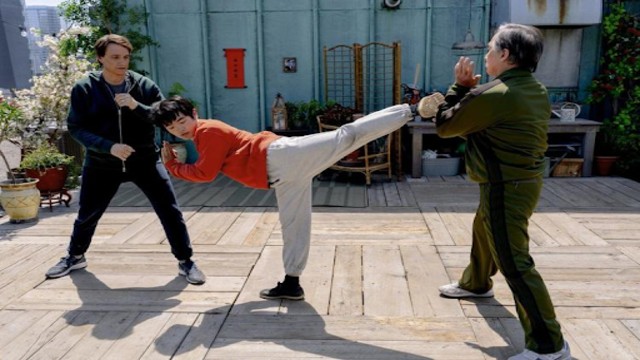
Auli'i Cravalho returns to voice the lead role in Moana 2. Disney
When Disney released the teaser trailer for Moana 2 in May, it racked up 178 million views in just 24 hours—more than Inside Out 2, Frozen 2, or any animated Disney film before it. With that kind of reception, it’s hard to imagine the sequel ever being anything less than a major cinematic event. Yet, originally, Moana 2 was planned as a streaming series. Now, it’s set to be one of the biggest blockbusters of the fall.
The decision to pivot from streaming to a theatrical release was part of Disney CEO Bob Iger’s strategy after his return in late 2022. Iger prioritized bringing Disney’s flagship properties back to theaters, aiming to maximize not just box office revenue but the ripple effects on merchandise and streaming. The shift came at a critical time for the studio, marking a return to its roots of creating big-screen spectacles.
Directors David Derrick Jr. and Jason Hand had already spent over a year developing Moana 2 as a series before it was reimagined as a feature film. Dana Ledoux Miller later joined the team as a co-director and co-writer. The movie’s transformation wasn’t without challenges, but as Derrick recalls, “It became all hands on deck. There’s a saying in Samoa: ‘All together or not at all.’”
The decision to make Moana 2 a theatrical release wasn’t just about business. Early screenings of the project convinced Disney executives that the story deserved the grandeur of the big screen. Even though a live-action Moana is already in development and slated for release in 2026, Derrick and Hand’s work on the sequel struck a chord. “It was always going to be big,” Hand says. “It just kept getting bigger.”
Set three years after the events of the original film, Moana 2 follows the titular heroine on another epic ocean voyage. This time, Moana is joined by a wayfinding crew that includes her younger sister Simea (Khaleesi Lambert-Tsuda) and new characters like Loto (Rose Matafeo), an engineer; Kele (David Fane), a grumpy farmer; and Moni (Hualālai Chung), a historian. “The way the first film connected her to her past, this story connects her and her people to the future,” Derrick explains.
The sequel also builds on the original’s groundbreaking representation of Pacific Islander culture. For co-director Dana Ledoux Miller, who is of Samoan heritage, the first Moana set a new standard. “It changed what was possible,” Miller says. “It shifted how stories about the Pacific could be told.”
Miller’s personal connection to the project runs deep. She founded the Pasifika Entertainment Advancement Komiti (PEAK) to support Pasifika creatives in Hollywood and also serves as a writer for the upcoming live-action adaptation. “My world is all Moana, all the time,” she jokes.
The new film celebrates Polynesian wayfinding, honoring the art, science, and spirituality that enabled Pacific Islanders to navigate vast oceans long before modern tools. Derrick, who also has Samoan ancestry, says it’s important that each member of Moana’s crew reflects this Indigenous brilliance. “These people discovered the last uncharted lands on Earth, creating one of the largest cultural spheres in history. That’s the genius we’re showcasing.”
Bringing such a story to life for the big screen comes with high stakes, but the filmmakers believe the effort will pay off. Moana 2, featuring the return of Auli’i Cravalho as Moana and Dwayne Johnson as Maui, is already generating massive buzz and is expected to continue Disney’s box office success this year. Whether it reaches the heights of its predecessor, it’s certain to resonate deeply with audiences, particularly those who see their heritage reflected in its sweeping story.
“When I watched the first film, I was pregnant with my first child,” Miller reflects. “I knew the world would never be the same because of it. My child will grow up in a world where they see themselves on the biggest stage.”















